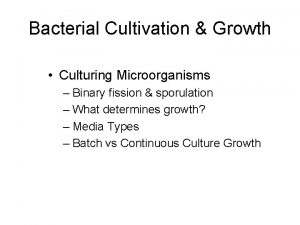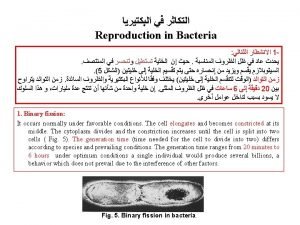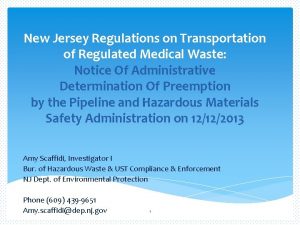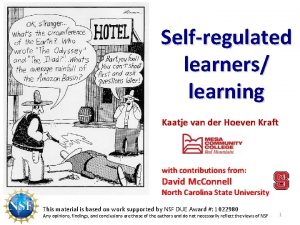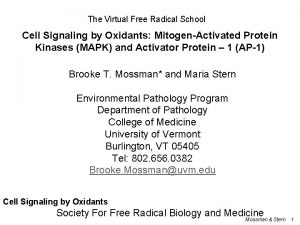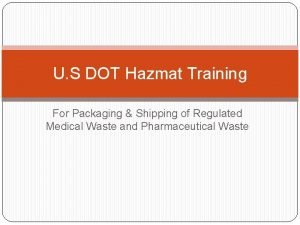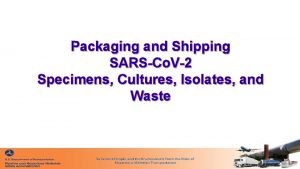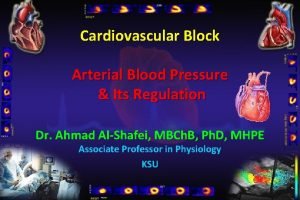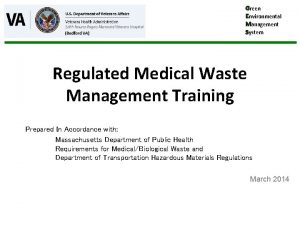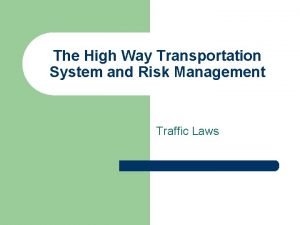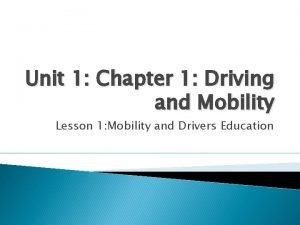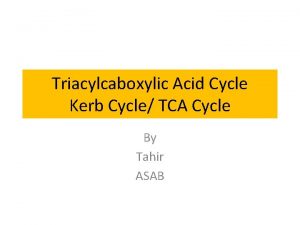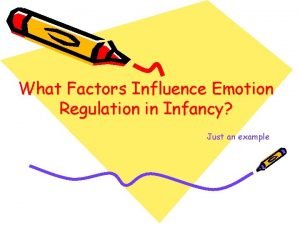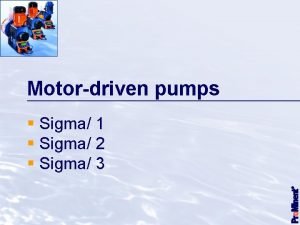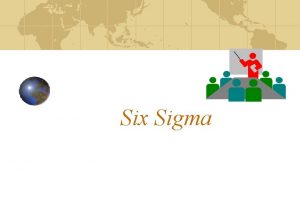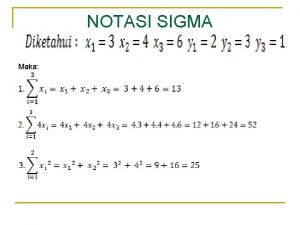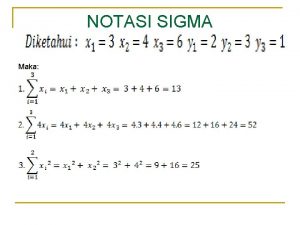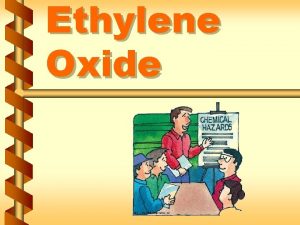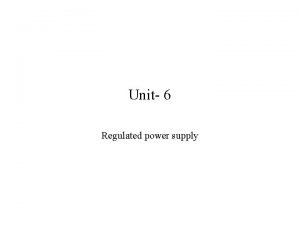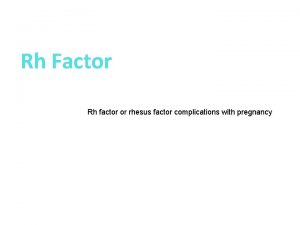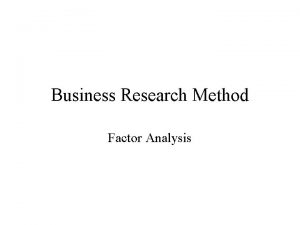Sigma factors in sporulation Sporulation regulated sigma factor
















- Slides: 16


Sigma factors in sporulation Sporulation: regulated sigma factor cascade … but what regulates the sigma factors? • Not transcriptional control • What kind of post-transcriptional control? • How are events coordinated? Checkpoints?

Sigma G Kellner, E. M. , Decatur, A. , and Moran, C. (1996). Two-Stage Regulation of an Anti-Sigma Factor Determines Developmental Fate During Bacterial Endospore Formation. Molecular Microbiology, 21(5), 913 -924. • G is active only in the forespore (Driks and Losick, 1991) • G does not become active until later during sporulation, after engulfment of the forespore (Partridge and Errington, 1993) • G is present before it is activated Why and How?

What controls the activity of G so that it is active at the right time and place?

Backtrack to E Background and Conclusions (Trempy et al; Stragier et al) • spo. IIGA + sig. E expression in vegetative cells gives E • Sporulation-dependent expression requires Spo. IIE • Spo. IIE also required for sporulation-dependent division • F required for activity of E in mother cell! Does G require spo. IIIA to be present in order to be active?

spo. IIIA is required for G activity Methods: • Fusion of lac. Z to ssp. E promoter -Gal synthesis (ssp. E is utilized by G polymerase during sporulation) RED=wild-type strain BLUE=spo. IIIA mutant Time (Hours)

However, the anti-sigma factor, G Spo. IIAB, may antagonize activity in the spo. IIIA mutant! (Kirchman et al. , 1993; Rather et al. , 1990; Foulger et al. , 1993)

So, first…to test if Spo. IIAB can G interact directly with in vitro, chemical cross-linking was used.

In the presence of nucleotides and under optimal binding conditions-- Spo. IIAB + E. coli =no binding SDS-Page Spo. IIAB + E. coli w/ cloned G =binding SDS-Page

G , Spo. IIAB CAN interact with G but does Spo. IIAB antagonize during sporulation? ? …Test with mutant G that does not bind efficiently to Spo. IIAB

E 155 K Mutation 1. In F, substitution of lys for glu reduces affinity of the sigma factor for Spo. IIAB 2. F and G are similar 3. Homologous mutation in G may also prevent binding to Spo. IIAB (Glu Lys) 4. chemical cross-linking was used to determine if the G mutant will bind to Spo. IIAB

In the presence of nucleotides and under optimal binding conditions-- G mutant E 115 K =no binding SDS-Page Wild-type G =binding SDS-Page

Confirmed: the E 155 K mutation in G reduces its affinity for binding to Spo. IIAB and G antagonizes activity. How are Spo. IIAB and spo. IIIA related?

Is there a mechanism that explains the late activation of G as dependant on another protein? • Spo. IIAB inhibits G activity • G mutant does not bind to Spo. IIAB What would happen if the G mutant was combined with a spo. IIIA mutant? How would G activity be effected?

Activity of G during sporulation using the ssp. E-lac. Z reporter fusion -Gal synthesis In spo. IIIA mutant: Wt G E 155 K mutant G is active in a spo. IIIA mutant!! spo. IIIA relieves the inhibition of G activity by Spo. IIAB E 155 K mutant does not require Spo. IIIA for its activation. Time (Hours)

Conclusions • Spo. IIAB inhibits G activity early after its synthesis • Spo. IIIA functions to relieve inhibition of G activity by Spo. IIAB • Relief occurs after engulfment of the forespore
 Sporulation in bacteria
Sporulation in bacteria Sporulation cycle
Sporulation cycle Health and social care act regulated activities
Health and social care act regulated activities Nj regulated medical waste transporters
Nj regulated medical waste transporters Kaatje kraft
Kaatje kraft Extracellular signal regulated kinase
Extracellular signal regulated kinase Mystericycle training
Mystericycle training Regulated medical waste n o s
Regulated medical waste n o s Mean arterial pressure from blood pressure
Mean arterial pressure from blood pressure Green environmental management system
Green environmental management system Evap service port 1 psi maximum regulated pressure only
Evap service port 1 psi maximum regulated pressure only Regulated medical waste n o s
Regulated medical waste n o s Explain how the hts is regulated
Explain how the hts is regulated Chapter 1 driving and mobility
Chapter 1 driving and mobility Dot regulated medical waste training
Dot regulated medical waste training Citric acid cycle also called
Citric acid cycle also called Emotionally regulated
Emotionally regulated
